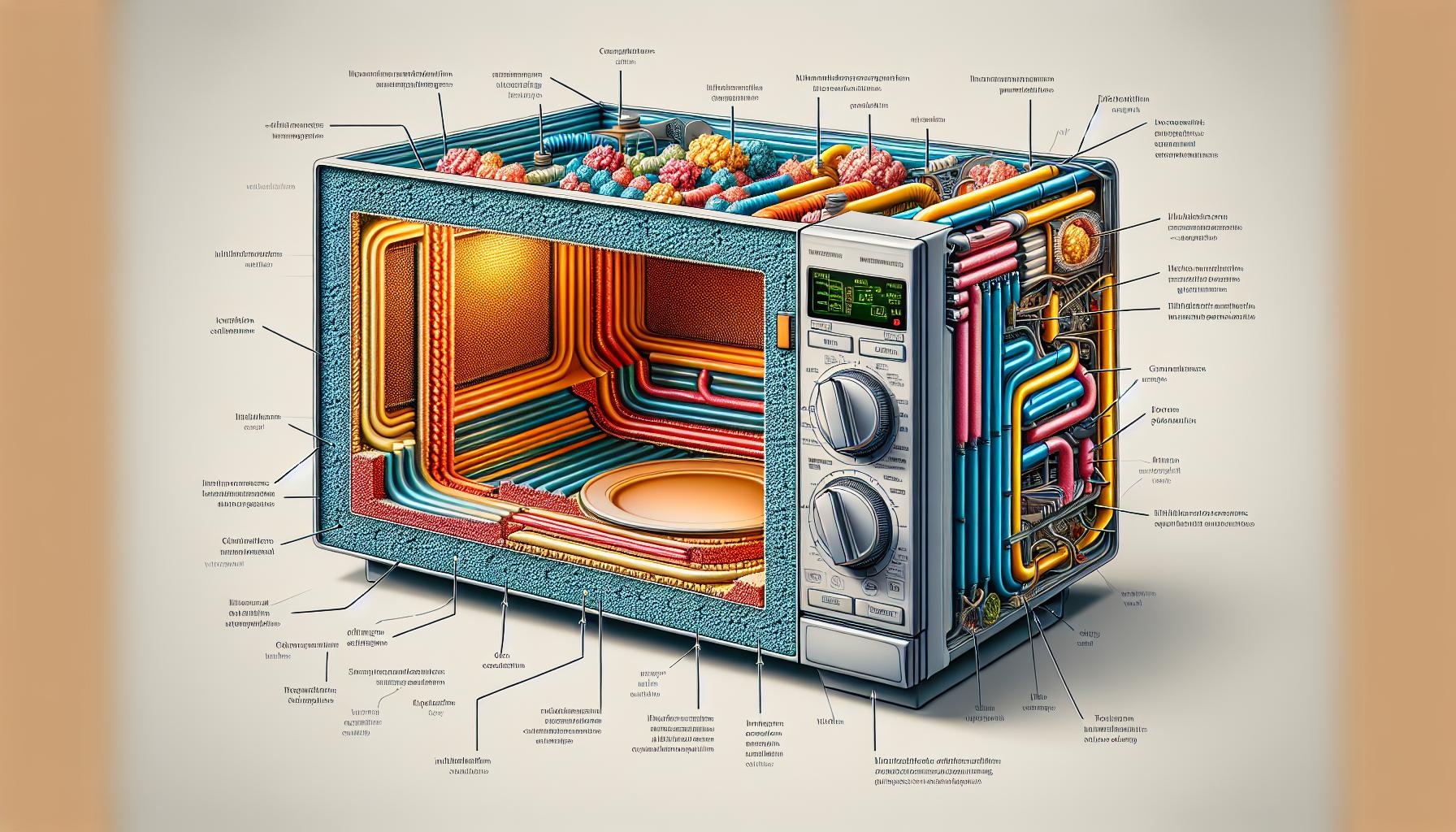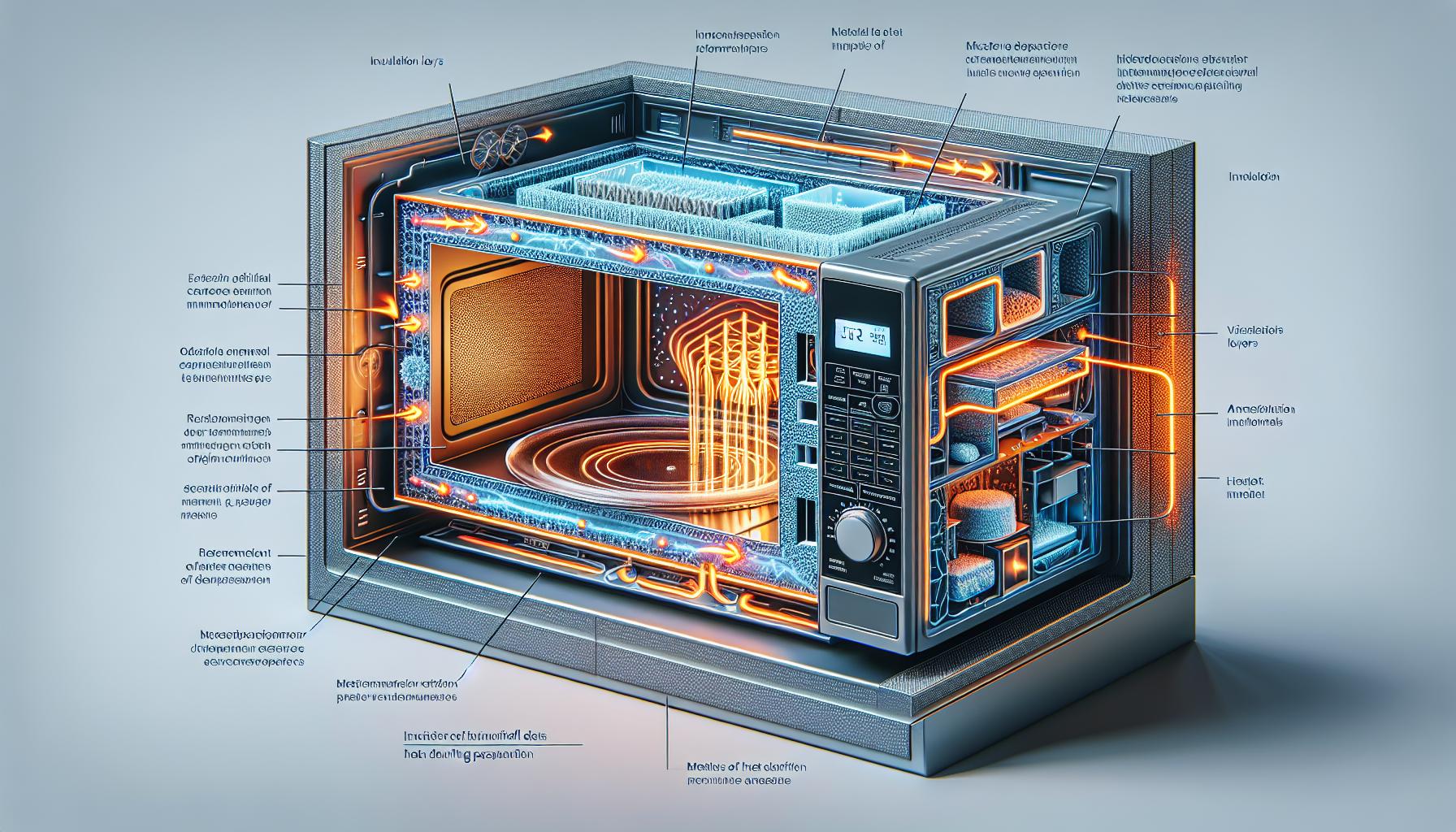This post contains affiliate links. See the affiliate disclaimer here.
Have you ever noticed that your microwave gets hot on the outside while heating up your food? It can be a bit puzzling, but don’t worry, there’s a simple explanation for this phenomenon.
In this article, we’ll delve into why your microwave might feel hot on the exterior and what it means for its functionality.
When you use a microwave, it generates electromagnetic waves that heat the food inside. However, some of these waves can escape and cause the outer surface of the microwave to become warm or even hot to the touch. This is known as “external heat transfer.” While it may seem concerning, it’s a normal occurrence and doesn’t necessarily indicate any issues with your appliance.
So, why does your microwave get hot on the outside? Stay tuned as we explore the different factors that contribute to this, including the design of the microwave and how it dissipates heat. Understanding this will help you use your microwave more effectively and ensure that it continues to work efficiently.

Why Does a Microwave Get Hot on the Outside?
When you microwave food, you may have noticed that the outside of the microwave can become hot or even warm to the touch. It’s a common occurrence and nothing to be concerned about. But have you ever wondered why this happens?
The main reason a microwave gets hot on the outside is due to the escape of electromagnetic waves. These waves are responsible for heating up the food inside the microwave, but in the process, some of the energy gets transferred to the outer surface of the appliance. This causes the outside to feel warm or hot.
Another factor that contributes to the exterior heating is the design of the microwave. Microwaves are built with insulation to keep the heat inside. However, there is always a certain amount of heat that escapes through the vents, which is necessary for the appliance to cool down and prevent overheating. This escape of heat through the vents can make the outside of the microwave warm to the touch.
The way a microwave dissipates heat also plays a role in its exterior temperature. Microwaves use fans or other cooling mechanisms to prevent the internal components from overheating. As these mechanisms work to keep the inside cool, some of the heat generated by the microwave’s operation is transferred to the outer surface. This additional heat can cause the outside of the microwave to feel hot.
So, when your microwave gets hot on the outside, it’s a normal phenomenon and doesn’t indicate any issues with the appliance. Understanding why it happens can help you make better use of your microwave and ensure its continued efficiency. Just remember not to touch the exterior of the microwave right after use, as it can be hot and potentially cause burns.
Factors Affecting External Heat Transfer in Microwaves
When it comes to understanding why a microwave gets hot on the outside, several factors come into play. These factors influence the process of heat transfer and contribute to the warming of the microwave’s exterior. Let’s take a closer look at some of these important considerations:
1. Insulation
The insulation of a microwave plays a crucial role in its heat transfer. The exterior of a microwave is typically insulated to minimize the amount of heat that is transferred to the outer surface. However, it’s important to note that no insulation is perfect, and some heat may still escape, leading to a warm outer surface. High-quality microwaves are usually designed with improved insulation to reduce this effect.
2. Air Circulation
Another factor that affects the external heat transfer of a microwave is air circulation. During operation, microwaves generate heat, and proper air circulation helps dissipate this heat effectively. However, poor ventilation or blocked vents can hinder the airflow, causing the heat to remain trapped inside the microwave. As a result, more heat is transferred to the exterior, causing it to become hot.
3. Heat Dissipation
Heat dissipation refers to the process of releasing heat from the microwave’s internal components to the surroundings. Efficient heat dissipation is crucial for maintaining the internal temperature and preventing excessive heat buildup. When the heat dissipation system is not optimized, excess heat can escape to the exterior, causing it to become hot to the touch.
It’s important to note that while these design features aim to reduce heat transfer, microwaves can still become hot on the outside during operation. As a safety precaution, avoid touching the exterior of the microwave immediately after use to prevent burns.
Tips to Prevent Excessive External Heat in Microwaves
If you’ve experienced your microwave getting hot on the outside, don’t worry – it’s not uncommon. While microwaves are designed to minimize heat transfer to the exterior, there are still certain circumstances in which the outside of the microwave can become hot. However, there are steps you can take to prevent excessive external heat and ensure the safe use of your microwave.
Here are a few tips to help you prevent your microwave from getting too hot on the outside:
1. Proper Placement: Make sure your microwave is placed in an area with sufficient space around it. This allows for adequate air circulation and prevents heat buildup. Avoid placing the microwave near heat sources such as stovetops or ovens, as this can contribute to increased external heat.
2. Avoid Overheating: Be mindful of the cooking time and power level you select when using your microwave. Overheating food for an extended period or using a high power level can cause excessive heat buildup both inside and outside the microwave. Follow the recommended cooking times and power levels for different types of food to prevent overheating.
3. Clean Ventilation Systems: Regularly clean the ventilation systems of your microwave to ensure proper airflow. Over time, dust, grease, and other debris can accumulate and block the vents, hindering the escape of hot air and affecting the cooling process. Refer to your microwave’s user manual for instructions on how to safely clean the ventilation systems.
4. Check for Damage: Inspect your microwave for any signs of damage or wear and tear. A damaged microwave may not provide efficient insulation or proper heat dissipation, leading to increased external heat. If you notice any cracks, loose parts, or other issues, it’s important to have your microwave repaired or replaced to maintain its functionality and safety.
By following these tips, you can minimize external heat and ensure the optimal performance of your microwave. Remember, taking precautions and keeping your microwave well-maintained is essential for safe and efficient cooking.
Conclusion
By implementing the tips provided in this article, you can prevent excessive external heat in your microwave and ensure safe and efficient cooking. Proper placement of your microwave is essential to allow for adequate air circulation and prevent heat buildup. Remember to follow recommended cooking times and power levels to avoid overheating. Regularly cleaning the ventilation systems will help maintain proper airflow and prevent blockage. Additionally, inspect your microwave for any signs of damage or wear and tear to ensure its functionality and safety.
Taking these preventive measures will not only minimize external heat, but also extend the lifespan of your microwave. So, next time you use your microwave, keep these tips in mind and enjoy hassle-free cooking without worrying about excessive heat on the outside.
Frequently Asked Questions
Q: How can I prevent excessive external heat in my microwave?
A: To prevent excessive external heat in your microwave, ensure proper placement to allow for adequate air circulation. Avoid overheating by following recommended cooking times and power levels. Regularly clean the ventilation systems to ensure proper airflow and prevent blockage. Inspect the microwave for any signs of damage or wear and tear to maintain its functionality and safety.

